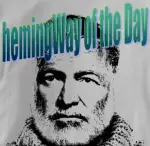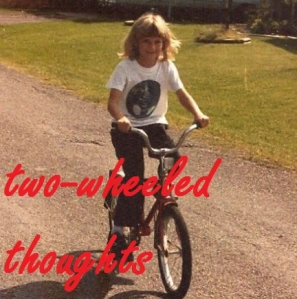It’s not really true that if you boil a frog slowly it won’t notice and will never try to escape. But if a lot of speakers very gradually inch a vowel forward or back, up or down in the space in the mouth, without even knowing, then over time a major change can set in without anyone acting in time to stop it. That is because vowel-boiling, unlike frog-boiling, is painless and victimless.
 Another winner from Liz! I loved this book. It has just the right mix of expert, researched history and linguistics information, and irreverent, populist sense of fun and utility. In fact, utility is part of the central lesson of this book. Using English should be about effective communication; one can be correct, eloquent, elegant, without being snooty about it; correctness is relative and subject to context; the language is tough and durable, and doesn’t fall apart just because we slip up on the distinction between ‘who’ and ‘whom.’ (‘Whom’ plays a large-ish role in the book, to great effect.)
Another winner from Liz! I loved this book. It has just the right mix of expert, researched history and linguistics information, and irreverent, populist sense of fun and utility. In fact, utility is part of the central lesson of this book. Using English should be about effective communication; one can be correct, eloquent, elegant, without being snooty about it; correctness is relative and subject to context; the language is tough and durable, and doesn’t fall apart just because we slip up on the distinction between ‘who’ and ‘whom.’ (‘Whom’ plays a large-ish role in the book, to great effect.)
Lane Greene is an editor, a linguist, and a columnist on language. He’s originally from Atlanta, Georgia, but now lives in England with his Danish wife, and speaks nine languages. He has a deeply impressive grasp of the history and trends of the English language and of linguistics; he is an expert in these areas and easily wins my trust. And it’s refreshing to meet an expert who is not purist or snobbish about his field – although as Greene points out, the more expert the linguist, the less purist they’ll be.
He begins with the basics: the difference between prescriptivist and descriptivist linguistics. Descriptivism observes how language is used and has been used, and makes recommendations for how we use language based on how it’s been and is being used. Prescriptivism tries to make rules based on some sense of what is correct – it tries to prescribe, rather than observe. Prescriptivists believe there is what Greene calls One Right Way to do things, which is an inherently problematic concept. Greene knows how to set and follow rules; in one of his roles, he works as an editor, so he knows about the application of standards. (Particularly for a certain publication, for example, a “house style” sets rules.) But he is at heart a descriptivist. “To sum up: language is not so much logical as it is useful. It is not composed; it is improvised. It is not well behaved; it is resourceful. It is not delicate; it is hardy. It is not always efficient, buts redundancy makes it robust. It is not threatened; it is self-renewing. It is not perfect. But it is amazing.”
The book-length metaphor at work here is evident in the title. Language is wild, not to be tamed, and doesn’t take to prescriptivism’s puritanical tendencies. It is always changing, and it takes care of itself; it doesn’t actually need guarding or protecting. Greene proves this via a number of case studies and fascinating histories, including the Great Vowel Shift and shifts in the meanings of individual words: “In the Middle English era, manners dictated that a girl was expected to be silly and buxom, but never nice” (because each of those words meant something very different then than they do now). He relates humanity’s adventures in language, including the design of purely logical languages (never caught on) and attempts to teach computers natural language, which doesn’t work because “the rules are too many, the exceptions too manifold.” He studies language as a political tool (less powerful than some think).
And in my favorite chapter (six), “Whom in a biker bar,” he handles questions about register and the limited necessity for ‘proper’ English. “The choice of [register] allows a speaker or writer a valuable second channel of communication, alongside the literal meaning of the words and grammar that (hopefully) add up to a clear proposition, command, question or request. … To restrict yourself only to Formal – to buy into the One Right Way fallacy – is to leave a valuable and versatile tool lying on the ground.” I had been wondering, throughout this spirited and convincing defense of descriptivism over prescriptivism, why indeed I am teaching my students to avoid comma splices (etc.), and chapter six answered it for me. There is still a utility for a ‘proper’ English in certain settings, but the grammar police of the world (and those whom Greene calls ‘language tamers’) take undue pleasure in correcting us when in fact we could stand to relax in most settings – especially in spoken language. “Insisting that speech – a live activity, always changing, a biological behavior – must imitate writing – which is fixed – is a bit like insisting that people should continue to look like an old photo of themselves.”
This book is a joy for anyone who loves language, its niceties and nuances and finer points, its ever-changing, exciting, shape-shifting utility and its fascinating history. It’s certainly for anyone who is still hung up on correcting other people’s grammar, and it is certainly for anyone (like an editor or an English teacher) whose job it is to do so. If you’re unconvinced that prescriptivism doesn’t serve us, please read this book. If you love words, read Lane Greene. I think I know of some students who will be assigned excerpts this coming fall semester!
Rating: 9 prepositions at the ends of sentences.
Filed under: book reviews | Tagged: grammar, linguistics, nonfiction, reading as education, writing/craft | 2 Comments »
 This one is a surprisingly quick and easy read, considering that it undertakes the history of a much-debated punctuation mark. Early on it made me giggle and brought me great joy. Later, it took me into Moby-Dick and Henry James, which I did not enjoy. At over 60 pages, the Melville & James chapter (“Semicolon Savants”) was by far the longest in the book, and occurred late in it, so it disproportionately colors the impression I walk away with, and not for the best. But earlier chapters on semicolons in legal arguments and the ever-changing nature of language rules, and pithier (than Melville) examples of semicolons as style (Twain, Irvine Welsh, Raymond Chandler, Rebecca Solnit!), made me very happy. Perhaps I felt that the Melville and James examples misportray the semicolon; perhaps it’s merely an expression of my preferences. I very much missed a discussion of the semicolon’s present symbolism in mental health awareness movements and tattoos, since I feel like that usage is cleverly figurative (even if it misconstrues my own semicolon tattoo, which is actually about punctuation). But maybe that aspect is too of-the-moment and has not yet stood the test of time.
This one is a surprisingly quick and easy read, considering that it undertakes the history of a much-debated punctuation mark. Early on it made me giggle and brought me great joy. Later, it took me into Moby-Dick and Henry James, which I did not enjoy. At over 60 pages, the Melville & James chapter (“Semicolon Savants”) was by far the longest in the book, and occurred late in it, so it disproportionately colors the impression I walk away with, and not for the best. But earlier chapters on semicolons in legal arguments and the ever-changing nature of language rules, and pithier (than Melville) examples of semicolons as style (Twain, Irvine Welsh, Raymond Chandler, Rebecca Solnit!), made me very happy. Perhaps I felt that the Melville and James examples misportray the semicolon; perhaps it’s merely an expression of my preferences. I very much missed a discussion of the semicolon’s present symbolism in mental health awareness movements and tattoos, since I feel like that usage is cleverly figurative (even if it misconstrues my own semicolon tattoo, which is actually about punctuation). But maybe that aspect is too of-the-moment and has not yet stood the test of time. 













